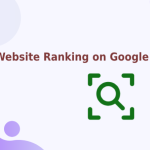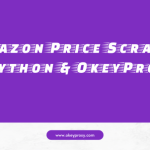YouTube, que alberga más de 500 horas de contenido subido cada minuto, se erige como una mina de oro de datos públicos, repletos de información para empresas, investigadores y desarrolladores. Desde metadatos de vídeos y comentarios hasta estadísticas de canales y tendencias de búsqueda, la extracción de datos de YouTube abre oportunidades para el análisis de contenidos, la investigación de mercados y la detección de tendencias.
Sin embargo, sus diseños dinámicos, las defensas anti-scraping como CAPTCHAs, y los límites legales hacen que la tarea sea un reto. Esta guía explora métodos procesables para raspar datos de YouTube de manera eficiente, ética y a escala, destacando cómo los proxies residenciales dinámicos de OkeyProxy permiten la extracción de datos sin problemas.
¿Por qué extraer datos de YouTube?
El scraping de YouTube ofrece acceso a una gran cantidad de información: títulos de vídeos, recuentos de visualizaciones, comentarios, descripciones de canales, número de suscriptores y resultados de búsquedas. Las empresas aprovechan estos datos para el análisis de opiniones, la evaluación comparativa de la competencia y los estudios de participación de la audiencia. Sin embargo, los frecuentes cambios de diseño, los límites de tarifas y los bloqueos de IP plantean obstáculos. OkeyProxy es una solución diseñada para sortear estas barreras con servicios proxy rentables y fiables adaptados al scraping web a gran escala.
Métodos de extracción de datos de YouTube
Aquí tienes un desglose de tres enfoques prácticos para extraer datos de YouTube, cada uno de ellos mejorado por las capacidades de OkeyProxy:
Método 1: Bibliotecas Python con yt-dlp
La biblioteca yt-dlp es una herramienta robusta para descargar vídeos y extraer metadatos sin depender únicamente de la API oficial de YouTube. Aquí tienes un proceso paso a paso:
Configurar el entorno: Instale Python 3.8+ y ejecute las solicitudes pip install yt-dlp para añadir las dependencias necesarias.
Extraer metadatos: Utiliza este código para obtener detalles del vídeo como el título, las visualizaciones y los "me gusta":
Integrar OkeyProxy: Para evitar bloqueos de IP durante el scraping masivo, configura los proxies residenciales de OkeyProxy:
Python
from yt_dlp import YoutubeDL
video_url = "https://www.youtube.com/watch?v=example"
opts = {}
con YoutubeDL(opts) como yt:
info = yt.extract_info(video_url, download=False)
datos = {
"Título": info.get("título"),
"Vistas": info.get("view_count"),
"Likes": info.get("like_count")
}
print(datos)
Python
opts = {"proxy": "http://user:pass@OkeyProxy.com:port"}Sustituya las credenciales por las de Panel de control de OkeyProxy.
¿Por qué OkeyProxy? Sus IP dinámicas rotan automáticamente, esquivan los CAPTCHA y garantizan un scraping ininterrumpido de miles de vídeos.
Método 2: APIs de Web Scraping
Para aquellos que buscan una solución de bajo mantenimiento, las API de terceros simplifican el scraping de YouTube gestionando el renderizado de JavaScript y la gestión del proxy. He aquí cómo:
Elige una API: Selecciona un servicio compatible con la estructura de YouTube.
Enviar peticiones: Utiliza la biblioteca de peticiones de Python para consultar datos de vídeo:
Mejora con OkeyProxy: Añade los proxies de OkeyProxy a la solicitud para evitar los límites de tarifa y las restricciones geográficas.
Python
solicitudes de importación
payload = {"fuente": "youtube", "url": "https://www.youtube.com/watch?v=example"}
response = requests.post("https://api.example.com", json=payload, proxies={"http": "http://OkeyProxy.com:port"})
print(respuesta.json())Ventajas Las API reducen la sobrecarga de codificación, mientras que OkeyProxy garantiza la escalabilidad proporcionando un vasto conjunto de IP residenciales, ideal para proyectos de nivel empresarial.
Método 3: Automatización del navegador con Selenium
Para contenidos dinámicos como comentarios o resultados de búsqueda, Selenium destaca simulando las interacciones de los usuarios:
Configuración: Instalar Selenium (pip install selenium webdriver-manager) y configurar un navegador Chrome headless:
Extraer comentarios: Navega hasta un vídeo y extrae los comentarios:
Añadir OkeyProxy: Integrar proxies para evitar la detección:
Python
from selenium import webdriver
from webdriver_manager.chrome import ChromeDriverManager
options = webdriver.ChromeOptions()
options.add_argument('--headless')
driver = webdriver.Chrome(service=ChromeService(ChromeDriverManager().install()), options=opciones)Python
driver.get("https://www.youtube.com/watch?v=example")
comentarios = driver.find_elements_by_css_selector("#content-text")
en comentarios:
print(comentario.texto)
driver.quit()Python
options.add_argument('--proxy-servidor=http://OkeyProxy.com:port')OkeyProxy Edge: Sus proxies residenciales imitan el comportamiento real de los usuarios, reduciendo los riesgos de detección de bots, un factor crítico para el scraping basado en Selenium.
Superar los retos del scraping
Las medidas anti-scraping de YouTube -limitación de tarifas, CAPTCHAs y prohibiciones de IP- pueden detener los proyectos. Proxies residenciales dinámicos de OkeyProxy abordarlos:
- Rotación de IPs: Cambia automáticamente de IP para evitar bloqueos.
- Orientación geográfica: Acceda a contenidos específicos de una región enrutando las solicitudes a través de IP locales.
- Escalabilidad: Admite el raspado de grandes volúmenes (por ejemplo, 10 millones de páginas) a un rentable $3/GB, según las estimaciones de las pruebas comparativas de proxy.
Por ejemplo, extraer 4.000 GB de datos de YouTube al mes cuesta alrededor de $12.000 con OkeyProxy, frente a $10.000-$50.000 con algunas API, un ahorro amplificado por la fiabilidad de OkeyProxy.
Consideraciones jurídicas y éticas
El scraping de YouTube requiere precaución:
- Condiciones del servicio: YouTube prohíbe el scraping no autorizado. Consulta a expertos legales para garantizar su cumplimiento.
- Sólo datos públicos: Limítate a los datos disponibles públicamente, evitando la información personal para respetar leyes de privacidad como el GDPR.
- Prácticas éticas: Respete el archivo robots.txt y limite la frecuencia de las solicitudes para minimizar la carga del servidor.
OkeyProxy apoya el scraping ético permitiendo peticiones controladas y distribuidas que se mezclan con el tráfico orgánico.
Casos de uso de los datos raspados
Análisis del sentimiento: Analiza los comentarios para medir el sentimiento de la audiencia.
Identificación de tendencias: Analice los resultados de las búsquedas para detectar temas emergentes.
Análisis de la competencia: Evalúe el rendimiento del canal frente a sus rivales.
Con OkeyProxyLas empresas pueden ampliar estos esfuerzos de forma eficiente, aprovechando los datos en tiempo real para la toma de decisiones estratégicas.
Profundización técnica: Detalles de la integración del proxy
Para el scraping masivo de YouTube, la configuración del proxy es clave. Aquí tienes un vistazo detallado:
Configuración del proxy: Regístrese en OkeyProxy, seleccione un plan de proxy residencial y obtenga las credenciales del panel de control.
Integración de código: Añada proxies a yt-dlp o Selenium como se ha indicado anteriormente. Para las API, añada la configuración del proxy a las solicitudes HTTP.
Gestión de fallos: Implementar lógica de reintento:
Gestión de la tasa: Espaciar las solicitudes (por ejemplo, 1 por segundo) para imitar el comportamiento humano, reduciendo los disparos de CAPTCHA.
Python
tiempo de importación
para intento en rango(3):
Inténtalo:
response = requests.get(url, proxies={"http": "http://OkeyProxy.com:port"})
romper
excepto:
time.sleep(5)OkeyProxy Advantage: Su pool de más de 90 millones de IPs garantiza IPs frescas, mientras que el balanceo de carga integrado optimiza el rendimiento, algo crucial para el scraping de plataformas dinámicas como YouTube.
Conclusión
El scraping de datos de YouTube en 2025 exige herramientas y estrategias inteligentes. Ya sea mediante bibliotecas Python, API o automatización del navegador, los proxies residenciales dinámicos de OkeyProxy aumentan la eficiencia y la fiabilidad. Al evitar los obstáculos contra el scraping y apoyar las prácticas éticas, OkeyProxy permite a los usuarios aprovechar el vasto panorama de datos de YouTube. Explorar Raspado de datos - Soluciones proxy de OkeyProxy y empiece hoy mismo a raspar de forma más inteligente.
Preguntas frecuentes
1. ¿Es legal el scraping de datos de YouTube con proxies?
El scraping de datos públicos de YouTube está permitido si se cumplen las condiciones del servicio y se evita la información privada. Los proxies residenciales de OkeyProxy garantizan un scraping ético al imitar a usuarios reales, pero se aconseja realizar una consulta legal.
2. ¿Cómo evitan los proxies los bloqueos de IP durante el scraping de YouTube?
Los proxies como OkeyProxy rotan las IPs dinámicamente, distribuyendo las peticiones a través de un pool de más de 90M. Esto evita los límites de velocidad y los CAPTCHA, garantizando un scraping masivo ininterrumpido.
3. ¿Puede OkeyProxy gestionar contenidos de YouTube con restricciones geográficas?
Sí, OkeyProxy ofrece geolocalización mediante el enrutamiento de solicitudes a través de IPs en regiones específicas, desbloqueando vídeos localizados o resultados de búsqueda, perfectos para análisis específicos de mercado.
4. ¿Cuál es la relación coste-beneficio de utilizar OkeyProxy para el scraping a gran escala?
A $3/GB, el scraping de 10 millones de páginas (4.000 GB) cuesta ~$12.000 mensuales con OkeyProxy, más barato que muchas API. Su fiabilidad y sus proxies de calidad tecnológica añaden valor a los proyectos de gran volumen.
5. ¿Cómo garantiza OkeyProxy la calidad de los datos de las campañas publicitarias?
En publicidad, las IP residenciales de OkeyProxy proporcionan datos precisos de YouTube en tiempo real (por ejemplo, métricas de participación), lo que permite una orientación precisa de los anuncios y un seguimiento del rendimiento sin interferencias de bots.



